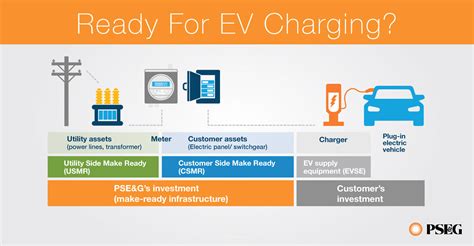With the rise in electric vehicles (EVs), many consumers are looking for ways to maximize their benefits from going green. One of the most beneficial programs available is the PSEG Electric Car Rebate. Not only does this initiative incentivize the purchase of electric vehicles, but it also aligns with the broader goal of promoting sustainability and reducing carbon emissions.
Understanding the PSEG Electric Car Rebate Program
The PSEG Electric Car Rebate program is designed to stimulate the adoption of electric vehicles in New Jersey. This initiative provides financial incentives to both new and used EV purchasers, aiming to make the shift to an eco-friendly vehicle more accessible. Depending on the vehicle type and battery capacity, the rebate can be as high as $5,000.
Eligibility Criteria
Before applying for the rebate, it’s essential to understand the eligibility criteria:
- Must be a resident of New Jersey.
- The vehicle must be purchased new from a licensed dealer.
- Must be an electric car or plug-in hybrid electric vehicle (PHEV).
- Applicants must submit the rebate application within 90 days of vehicle purchase.
- The vehicle must be registered in the applicant’s name.
Maximizing Your Benefits
While the rebate alone is a great incentive, there are additional strategies to maximize the overall benefits of going electric:
1. Research Additional Incentives
Beyond PSEG’s rebate, explore other state and federal incentives for electric vehicle purchase. The federal tax credit can be as much as $7,500, depending on the model. Check the IRS website for specific qualifications based on the make and model of your electric car.
2. Understand Charging Options
Investing in a home charging station can lead to significant savings in the long run. PSEG offers rebates for home charging equipment, which can complement the electric car rebate effectively. Having a charging station at home allows EV owners to charge their vehicles overnight, taking advantage of lower utility rates.
3. Utilize Public Charging Stations
PSEG partners with various public charging stations to provide more accessible options for EV drivers. Familiarize yourself with charging stations located around your community and consider signing up with charging networks to benefit from discounted rates.
4. Participate in Carpool Programs
Some local governments offer incentives for carpooling or using high-occupancy vehicle (HOV) lanes. This can help save on gas and reduce wear and tear on your vehicle. Joining a carpool not only saves money but also minimizes your carbon footprint.
5. Leverage Local EV-Friendly Policies
Many cities have implemented policies to promote electric vehicle usage, such as free parking for EVs or access to bus lanes. Research and take advantage of any local benefits offered exclusively to electric vehicle owners.
Environmental Impact and Long-term Benefits
Switching to an electric vehicle goes beyond personal financial incentives; it contributes significantly to environmental conservation. By reducing reliance on fossil fuels, EVs help lower greenhouse gas emissions. This positive shift not only benefits individual owners but also contributes to the broader goal of achieving cleaner air and a healthier planet.
Conclusion
Incorporating an electric vehicle into your lifestyle can be a financially savvy and environmentally responsible decision. By taking advantage of PSEG’s Electric Car Rebate program, along with other available incentives, you can maximize both your savings and contributions to sustainability. It’s not just about the rebates; it’s about making a long-term commitment to driving green.
FAQs
1. How do I apply for the PSEG Electric Car Rebate?
You can apply for the rebate online through the PSEG website. Ensure you have all required documents, including the vehicle purchase receipt and registration details.
2. What types of vehicles are eligible for the rebate?
The rebate applies to fully electric vehicles and plug-in hybrid electric vehicles that meet the eligibility criteria set by PSEG.
3. Can I combine this rebate with other incentives?
Yes, the PSEG rebate can be combined with other state and federal incentives, which can make the purchase of an electric vehicle substantially more affordable.
4. How long does it take to receive the rebate?
Typically, rebates are processed within 8-12 weeks after the application is submitted, but this may vary based on processing times.
5. Are there incentives for charging equipment?
Yes, PSEG offers additional rebates for purchasing home charging equipment, which can help you maximize your electric vehicle experience.
Download Pseg Electric Car Rebate
